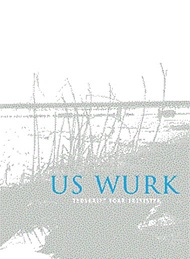Jonge kearels komme sjongende de himmen út wei. Rjuchting as ferhâldingswurdobjekt en komplekse ferhâldingswurdkloften yn it Frysk
Abstract
The West Frisian adposition út ‘out (of)’ does not only denote a source, it can also be used to denote a goal (e.g. it lân út ‘(out) into the field’). Goal expressions with út can be turned into source expressions by adding a
postposition wei (e.g. it lân út wei ‘out of the field’). In this article a detailed description of such adpositional phrases with út (wei) is offered. It is shown that goal-denoting út selects a direction as its adpositional object:
the general direction term kant, cardinal direction terms, prepositional phrases with efter ‘beyond’ or nouns denoting fields and roads (used as directions). The status of directions as adpositional objects is discussed and
it is argued that directions are basically locations, i.e. unbounded regions that are definitionally dependent on a point of view. Adpositional phrases with út wei involve embedding of a goal expression in a source expression.
On the basis of a comprehensive description of complex adpositional phrases in West Frisian it is shown that adpositional phrases having a direction as their adpositional object provide evidence for the following
hierarchical ordering of the basic space structuring concepts: PLACE < GOAL < SOURCE < ROUTE.

